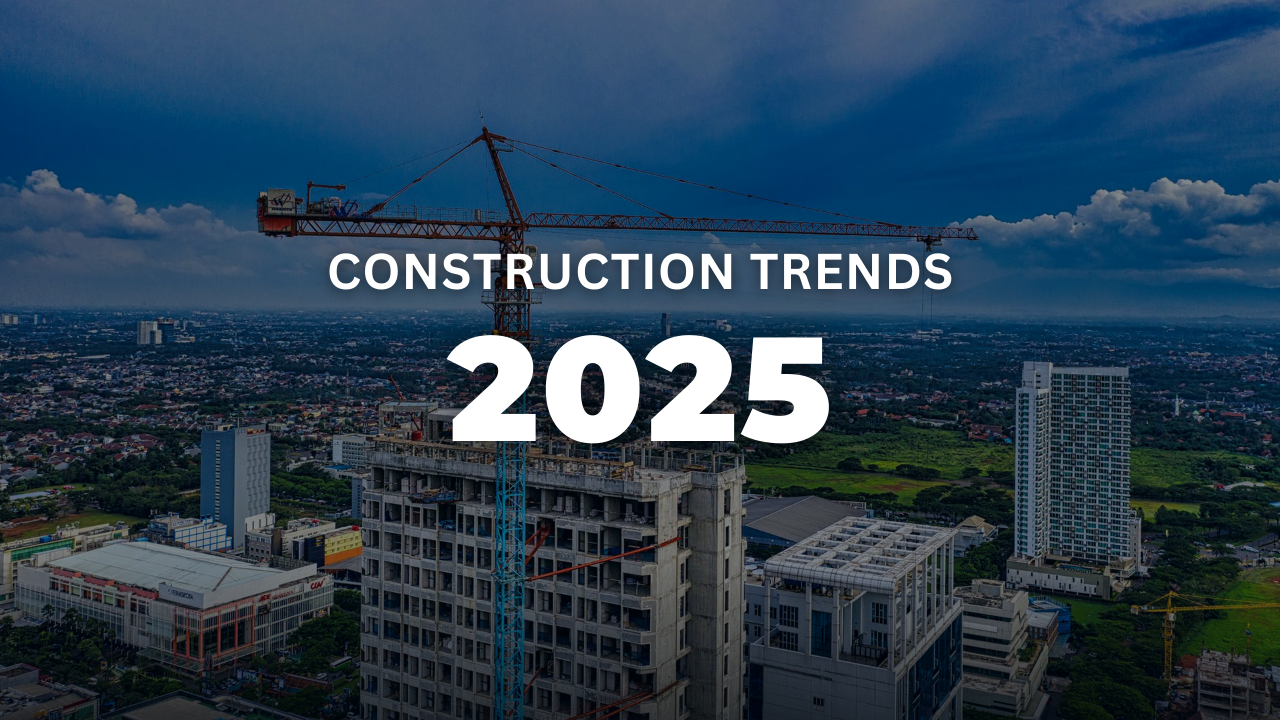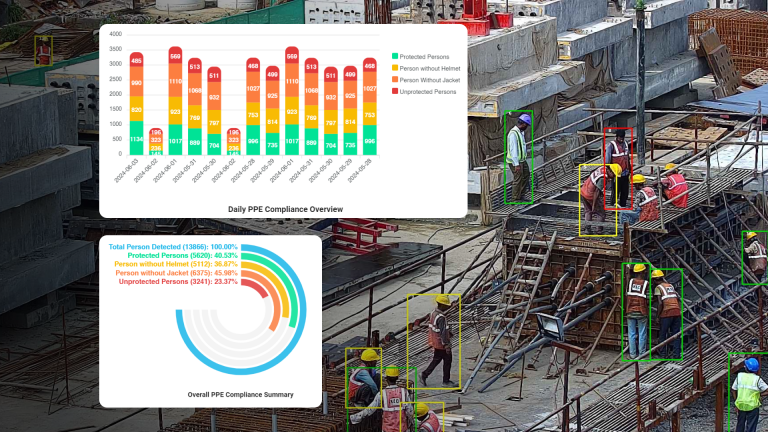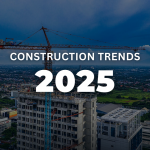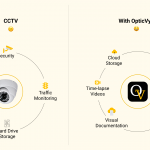The Indian construction industry is projected to reach $1.4 trillion, reflecting the sector’s consistent and robust expansion, underlining its pivotal role in economic development.
The construction industry will continue to work towards a more sustainable future in 2025 and beyond, with a global push towards reducing carbon emissions and investing in renewable energy generation and green infrastructure. The trend towards sustainability is expected to remain steady, making it a key factor shaping the future of the construction industry.
In this article, we’ll explore some of the most significant trends impacting the construction industry and how they will shape its future.
Construction Industry Trends in 2025
1. Construction 3D Printing
Construction 3D printing, also known as Additive Manufacturing (AM), creates three-dimensional objects by layering materials such as concrete, plastic, or metal. The technology is used in the construction industry to print large-scale components, building facades, and even entire buildings.
One of the major advantages of construction 3D printing is its ability to create complex shapes and designs that would be difficult or impossible to construct using traditional methods. It can also reduce material waste, construction time, and costs. Construction 3D printing can also help with sustainability by using recycled materials, reducing transportation emissions, and minimizing construction site waste.
Moreover, 3D printing technology allows for greater precision and accuracy, which can result in safer and more structurally sound buildings. Additionally, it can provide greater flexibility in design and customization, enabling architects and engineers to create unique and innovative structures that were previously unattainable.
2. Reality Capture
It is a technology that captures the real world in digital form. Reality capture in the construction industry refers to the use of cameras and 3D scanning equipment to create a digital representation of a construction site, building, or infrastructure project.
Reality capture has become an increasingly popular tool in the construction industry as it allows for accurate and efficient site monitoring, progress tracking, and quality control. It can also be used to create detailed as-built documentation and to aid in the design and planning process.
Construction camera technology allows for remote monitoring and collaboration, reducing the need for site visits and increasing productivity. The captured data can also be used for training and safety purposes, allowing workers to virtually navigate and familiarize themselves with the site and potential hazards. Along with this, the construction camera can help firms save money and time.
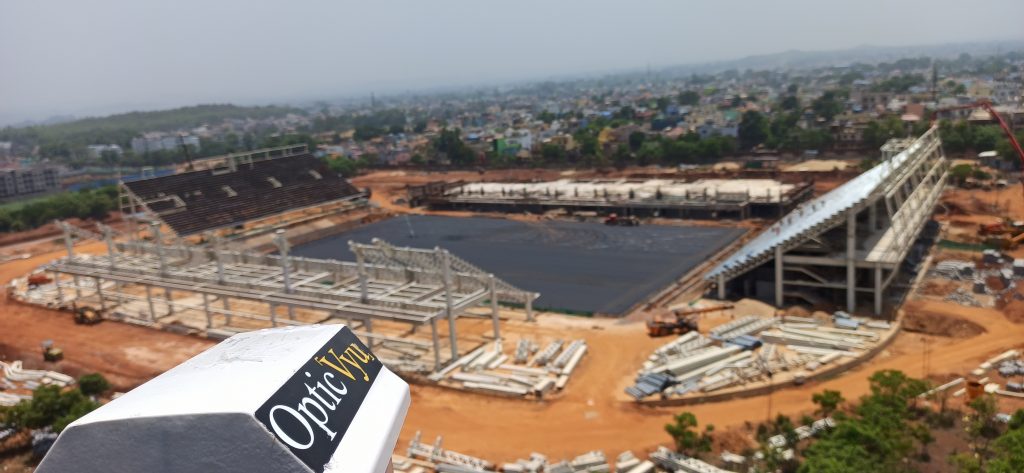
In addition to these benefits, reality capture can also aid in dispute resolution by providing an accurate and impartial record of the project’s progress and any changes made throughout the construction process. It is an emerging trend in the construction industry that is expected to continue growing in popularity as technology advances and becomes more accessible.
3. 4D & 5D BIM
BIM, or Building Information Modeling, is a digital representation of a building’s physical and functional characteristics. BIM technology enables architects, engineers, and construction professionals to create a 3D model of a building that contains detailed information on each component. This information can include dimensions, materials, and even maintenance requirements.
4D & 5D BIM is advancing from traditional 3D design models to encompass 4D (time scheduling) and 5D (cost estimation), thereby enhancing the accuracy and efficiency of construction planning. 4D BIM enables construction teams to align project timelines and schedules with the building model, while 5D BIM incorporates cost data into the design process, facilitating real-time budgeting and financial assessments. Furthermore, BIM encourages collaboration among architects, engineers, and project managers, minimizes errors, improves planning, and supports sustainability initiatives.
4. Drone Mapping
Drone mapping and monitoring is a rapidly growing trend in the construction industry. With the help of drones equipped with cameras and other sensors, construction companies can capture high-resolution aerial images and create 3D models of construction sites, buildings, and infrastructure projects. These models can be used for a variety of purposes, such as site planning, progress monitoring, quality control, and safety inspections.

Drones are also useful for monitoring hard-to-reach areas, such as roofs, towers, and bridges, for signs of wear and tear or damage. By using drones for these tasks, construction companies can save time, reduce costs, and improve safety by eliminating the need for workers to climb ladders or work at heights.
Overall, drone mapping and monitoring is an innovative and efficient solution that is transforming the way construction projects are planned, managed, and completed. It is a trend that is expected to continue growing in popularity as more construction companies recognize its benefits.
5. IoT & Wearable Devices
In 2025, IoT (Internet of Things) and wearable devices are expected to continue transforming the construction industry. These technologies are improving safety, efficiency, and productivity on job sites by providing real-time data and insights.
Some of the new ways IoT and wearable devices could be used in construction include:
- Smart hard hats: Hard hats equipped with sensors and cameras can monitor workers’ vital signs, detect falls, and issue alerts in case of emergencies.
- Smart glasses: Wearable devices like smart glasses can provide workers with hands-free access to instructions, schematics, and safety procedures, improving their ability to perform tasks accurately and safely.
- Smart sensors: IoT sensors can be placed in equipment, tools, and materials to track their location, usage, and maintenance needs, helping companies optimize inventory management and reduce waste. One example of a smart sensor is a PM air quality monitoring sensor that you can use with a construction camera.
- Autonomous vehicles: Robotics and autonomous vehicles can be used in construction to move heavy equipment and materials, minimizing the risk of accidents and injuries.
6. Prefabricated and Modular Construction
Prefabricated and modular construction is a method that involves the manufacture of building components offsite, allowing for faster and more efficient construction times. These prefabricated components can include entire building modules, such as complete rooms or even whole floors, that are then transported to the construction site for assembly.
The benefits of prefabricated and modular construction are numerous. The controlled factory environment leads to a higher degree of precision and quality control, resulting in less waste and fewer errors during assembly. This method also reduces construction time and can lead to cost savings due to the efficiencies in manufacturing and transportation.
Here is an example of a Prefabricated construction project monitored with an OpticVyu Time-lapse camera:
Looking ahead to 2025, the trend towards prefabricated and modular construction is expected to continue to grow as the benefits become more widely recognized and accepted by the industry. This method can also help address the ongoing labor shortage in the construction industry by reducing the need for on-site labor and allowing for more efficient use of resources.
7. Virtual and Augmented Reality
Virtual and Augmented Reality (VR/AR) technology is an emerging trend that has the potential to revolutionize the construction industry.
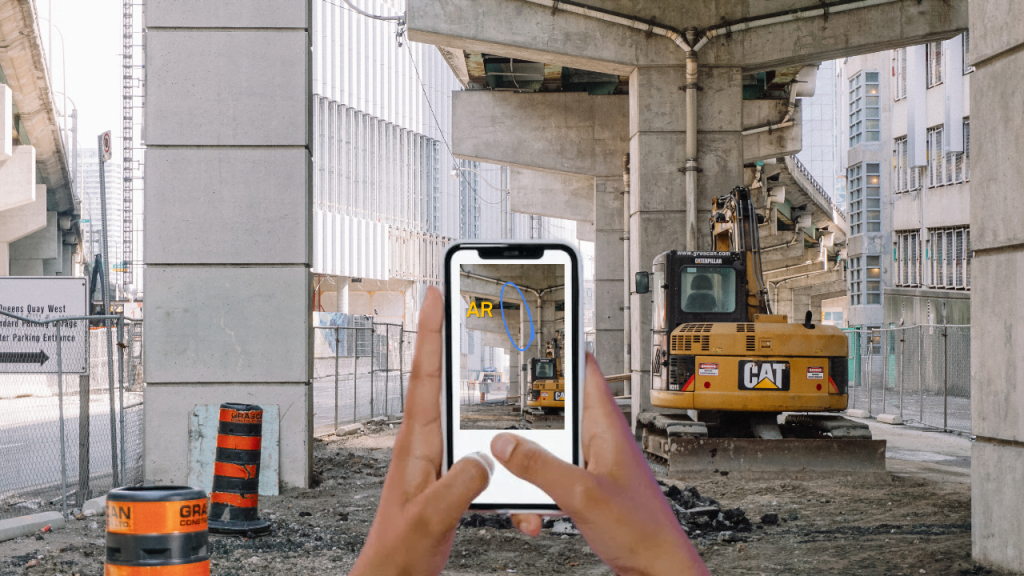
Here are some ways VR/AR can aid the construction industry:
- Enhanced Design: VR/AR can help architects, engineers, and designers create better designs. By using VR/AR, designers can create virtual models of their designs and visualize them in 3D. This allows them to see potential issues or conflicts before construction begins, saving time and money.
- Improved Communication: VR/AR can improve communication between stakeholders by providing a common platform to visualize and discuss the project. This helps reduce misunderstandings and conflicts, leading to a smoother construction process.
- Safer Work Environment: VR/AR can provide workers with a virtual training environment that simulates hazardous situations, allowing them to learn and practice safety procedures in a safe and controlled environment.
- Virtual Site Inspections: With VR/AR, site inspections can be conducted virtually, reducing the need for workers to physically visit the site. This can save time and money, especially for large construction projects.
Overall, VR/AR technology has the potential to transform the construction industry by improving design, communication, safety, and efficiency. As technology continues to develop, we can expect to see more applications in the construction industry in the future.
8. Green Building Technology
The way we build things can impact the environment a lot, causing pollution and using up many resources. But now, there’s a new trend called green building technology that aims to make construction more eco-friendly. This means using materials that are recycled or come from sustainable sources. Green buildings also have smart designs that save energy, like using solar panels for power, collecting rainwater, and letting in natural air instead of always using air conditioning.
Green building tech has many benefits. It helps reduce pollution, saves water and energy, and makes the air inside buildings better. Plus, in the long run, it can be cheaper because these buildings often cost less to run. As more people want eco-friendly buildings, we can expect to see even more cool ideas in green building technology. It’s an exciting time for construction as we work towards a better and more sustainable future for our planet.
9. Construction Documentation & Management Software
Construction documentation and management software offers a range of tools to manage various aspects of the construction process, from scheduling and budgeting to project management and collaboration. With this software, construction professionals can track progress, manage budgets and schedules, and collaborate with team members in real time. Such software also helps to reduce errors and improve communication between different teams and stakeholders. By using digital documentation tools, construction professionals can easily share and update plans, blueprints, and other critical documents, ensuring that everyone is on the same page and working towards the same goals.
In 2025, this trend is expected to continue to grow as construction professionals recognize the benefits of using digital tools to manage complex construction projects. As technology continues to evolve, new features and capabilities will be added to construction documentation and management software, making it an even more powerful tool for the industry.
10. Labor Shortage (Growing need for labor)
It is a major trend affecting the construction industry. There is a growing need for labor due to the increase in construction projects, but there is a shortage of skilled labor. This has led to higher labor costs, project delays, and lower productivity. To address this trend, construction companies are adopting new strategies such as offering better wages and benefits, investing in training programs, and leveraging technology such as automation and robotics to make up for the labor shortage.
11. Robotics
Robotics is revolutionizing the way buildings are designed, constructed, and maintained. Robotics is being used for a wide range of construction tasks, from site surveying and data analysis to heavy lifting and assembly.
One of the primary benefits of robotics in construction is the ability to complete tasks more quickly, accurately, and efficiently. This can result in reduced project timelines, improved safety, and cost savings. For example, robots can be used for tasks such as bricklaying, painting, and welding, which are traditionally labor-intensive and time-consuming.
Another advantage of robotics in construction is its ability to work in challenging or hazardous environments.
Furthermore, robotics technology can help to address the industry’s labor shortage by reducing the need for manual labor and skilled workers. Robotic automation can also improve safety by taking over dangerous tasks and reducing accidents and injuries.
12. Carbon Negative Construction Materials
This year, a notable trend is the advancement of carbon-negative materials, which are products that sequester more carbon from the atmosphere than they release during their manufacturing process. Examples of such materials include hempcrete, concrete that captures carbon, and biochar-based products. These innovations contribute to achieving net-zero objectives while ensuring structural integrity.
Conclusion
The construction sector is increasingly embracing sustainability, as the world seeks to lower carbon emissions and promote renewable energy production and green infrastructure. To ensure their future growth, construction companies need to keep abreast of these emerging trends.

